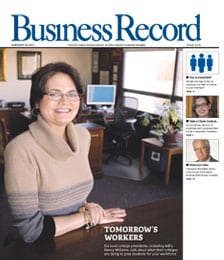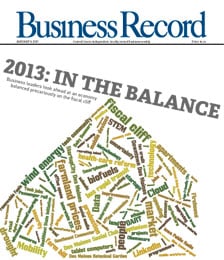Cell phone providers to take on MasterCard, Visa
AT&T Inc. and Verizon Wireless have banded together to find a way to allow people to use their smart phones to purchase items instead of using a credit or debit card.
People with knowledge of the plan told Bloomberg that the two companies want to let users wave their smart phones over a sensor to pay. The companies are working with Discover Financial Services and Barclays plc to test the idea in four U.S. cities.
With about 1 billion debit and credit cards owned by consumers in the United States, a smart phone pay system could hurt card providers MasterCard Inc. and Visa Inc. Last year, 82 percent of U.S. consumer spending was handled through MasterCard or Visa.
“This is definitely a game-changer,” Richard Crone of Crone Consulting LLC told Bloomberg. The mobile carriers “are the biggest recurring billers in every market. They are experts at processing payments.”
A spokesman for a group representing retailers praised the idea, saying that for too long MasterCard and Visa have controlled interchange fees on cards and that with a new system comes a new chance for fees to be reduced on the retailers’ end of the transaction.
“We have long argued that real competition is missing from today’s payments market,” Brian Doge, spokesman for the Retail Industry Leaders Association, told Bloomberg. “The emergence of a secure and reliable competing network that serves the demand from consumers for mobility payment options and reduces retailers’ costs would be welcomed news.”
But, though interchange fees may be reduced, retailers would still have to buy hardware to scan phones, and transactions would still involve fees.
Visa and MasterCard are also looking into creating a system to pay using smart phones.
“Visa is in discussions with a number of mobile operators around the world,” Bill Gajda, head of Visa’s mobile division, told Bloomberg. “We continue to believe that the best opportunity to create a secure, scalable, mobile-payment service is by working together, converging mobile and financial networks, and extending the value of electronic payments to the mobile channel.”








